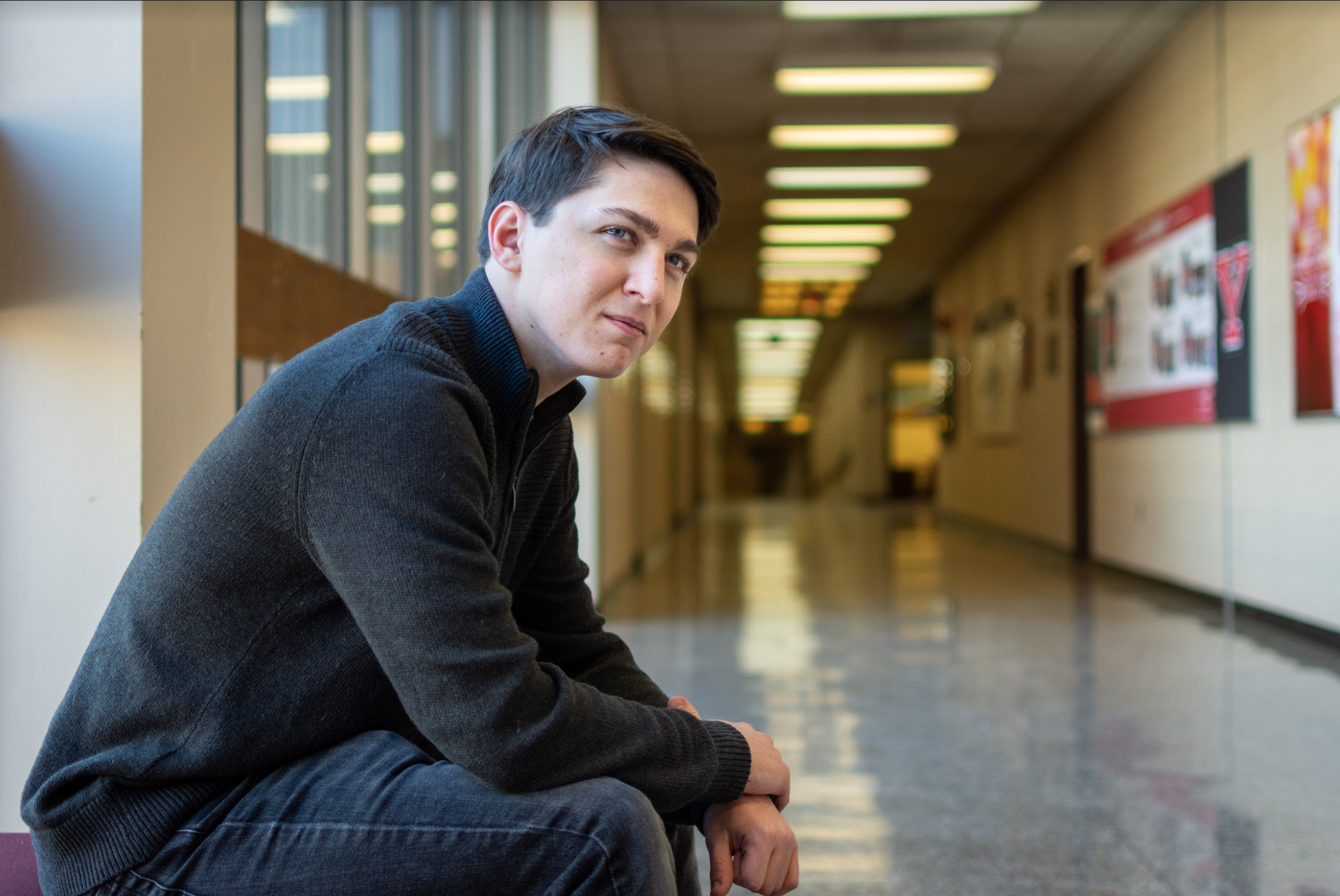By Alyssa Weston
Brady Sklenar’s interest in American Sign Language started at the age of three when his mother taught him the ASL alphabet as a way to distract his “rambunctious” toddler antics. Eventually, Sklenar’s family was able to have “secret” conversations only they could understand.
Sklenar, a senior computer information systems major at Youngstown State University, was in second grade when his interest in ASL grew during a school speech on historical figure Thomas Hopkins Gallaudet, the man credited for bringing sign language to the United States.
Sklenar is now the only ASL minor at Youngstown State University.
“[Before the speech I] did something to make my mom mad, so as a punishment she told me that I needed to sign the entire speech as well. So, over the weekend I learned how to sign the entire speech and after [giving the speech] I really loved [ASL],” he said.
John Sarkissian, chair of the Department of World Languages and Cultures, said YSU does not have the resources to offer enough coursework to grant a minor in ASL. Sklenar, however, transferred in sufficient hours in ASL to qualify for a minor through the Individualized Curriculum Program.
“As far as I know — and I’ve been chair since we reintroduced ASL — Brady is the only student we have had who has been able to minor in ASL,” Sarkissian said.
Although in elementary school Sklenar looked for ASL classes to take, the only available classes at the time were at a college level.
Sklenar found a tutor through the Youngstown Hearing and Speech Center, who taught him ASL from third grade until he graduated high school.
He said he was able to get high school language credits for those tutoring sessions and then decided to pursue a degree in ASL for two years at Rochester Institute of Technology, which is known for their ASL program, before transferring to YSU.
“After two years, I realized I love the language, the deaf community and the culture, but interpreting isn’t something that fits me and my life … I was able to get a lot of those credits that I took at RIT transferred here into an individualized ASL minor,” he said.
Although Sklenar said he doesn’t practice ASL as often as he’d like to, he keeps up with his old classmates at RIT and goes over signs at least every few days.
In the future, Sklenar would like to combine his love for ASL and technology to either teach hearing impaired people about technology, or he’s interested in recent technological advancements that use cameras and/or body sensors to read and translate sign language into written English and seeing if those advancements can lead him to a job opportunity.
When Sklenar first began his ASL journey in elementary school he had no idea about the culture surrounding the deaf community.
“I just thought it was a visual form of English and I thought it was a cool thing to do, but ASL is its own language and grammatical structure. It’s very complex and there’s a whole community and culture that uses this language,” he said. “I had no idea what I was getting myself into but its been an awesome journey.”
In Sklenar’s opinion, one of the misconceptions surrounding the ASL is many people confuse sign language as a way of signing English or as a universal language for all deaf people, and that’s not necessarily the case.
“There are other types of sign language across other cultures and countries, and each of those languages have evolved over time too. It’s a lot more complex than people think at first,” he said.
Sklenar suggests anyone try taking a class or learning more about ASL.
“Try it out and even if its just between you and your friends at first learning a few signs and being able to hold some secret conversations,” he said. “There’s so much more to gain from it than just learning the alphabet. There are so many people you can meet and different life experiences that you wouldn’t be exposed to otherwise.”
